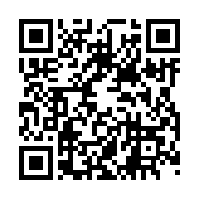Thomas Hardy (1840–1928)
83 Study Questions, Activities, and Resources
Study Questions and Activities
Drummer Hodge
- What place and what war make up the setting?
- Compare the point of stanza 3 to a similar point made in Rupert Brooke’s “The Soldier.”
The Subalterns
- Clarify Hardy’s use of personification in each stanza.
- Define the adjective “fell” in the last stanza, then paraphrase the sentence that comprises the last stanza.
The Ruined Maid
- What are some meanings of the word “ruined”?
- Look up the word “maid.” What does the word mean in the title?
- Describe the structure: the number of speakers, the use of dashes, who speaks first, who speaks last.
- Describe the two former co-workers.
- Can you distinguish between the two women’s speech patterns?
- What is the main irony?
The Impercipient
- Look up the word “percipient,” then state the significance of the prefix “im.”
- In stanza 2, focus on the word “infelicity.” Look up “felicity” in the Oxford English Dictionary, and then consider the importance of the prefix “in.”
- In stanza 3, why does the speaker feel it might be appropriate to be the object of Christian charity?
- Suggest synonyms for the verb “mark” in stanza 4 and the adjective “meet” in stanza 5.
- What is the meaning of “liefer” in stanza 5?
- In stanza 5, what charge or accusation against the speaker adds insult to injury?
- Paraphrase the last two lines. What is their overall tone?
Mad Judy
- Who is the speaker?
- In stanza 2, Judy uses the metaphor “this stony shore.” To what does she refer?
- Look up “brands” and “headsman” in a good dictionary.
- Explain the irony in the poem. Which of the three types of irony is it?
The Going and The Haunter
- Read the discussion of the poems about Emma by Andrew Moore at the following link: http://www.universalteacher.org.uk/poetry/hardy
- Who was Emma Gifford (1840-1912)?
The Convergence of the Twain
- In what year did the Titanic sink?
- Define both nouns in the title.
- Paraphrase the first stanza, placing the grammatical subject at the beginning of the sentence.
- Who is guilty of pride?
- How does alliteration emphasize theme?
- How is the deity depicted? How is the deity depicted in “Let Me Enjoy”?
- What is the “creature of cleaving wing”?
- Clarify the marriage metaphor in the poem.
Ah, Are You Digging on My Grave?
- Clarify the major irony and its type in this poem.
- Compare this poem with Housman’s “Is My Team Ploughing?”
Channel Firing
- To what promised biblical event does the poem refer?
- Who is the speaker?
- How does Hardy use humour to make serious points about war?
- How is this a pessimistic poem?
- Discuss the thematic significance of the three places mentioned in the last two lines.
The Man He Killed
- Comment on how the speaker’s diction characterizes him.
- Why did the soldier enlist?
- Give specific examples of irony in the third stanza and final stanzas. What are the denotations of “quaint” and “curious”?
- How does Hardy’s use of dashes affect the metre and theme?
Resources
Hap
Read the sample student essay on “Hap”.
Let Me Enjoy
Listen to this poem as it was set to music by Gerald Finzi (1901-56):


